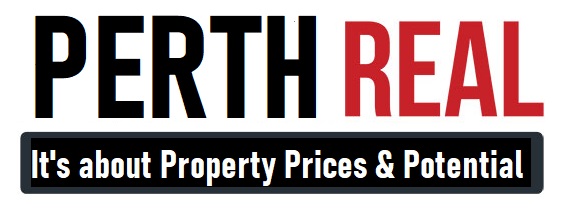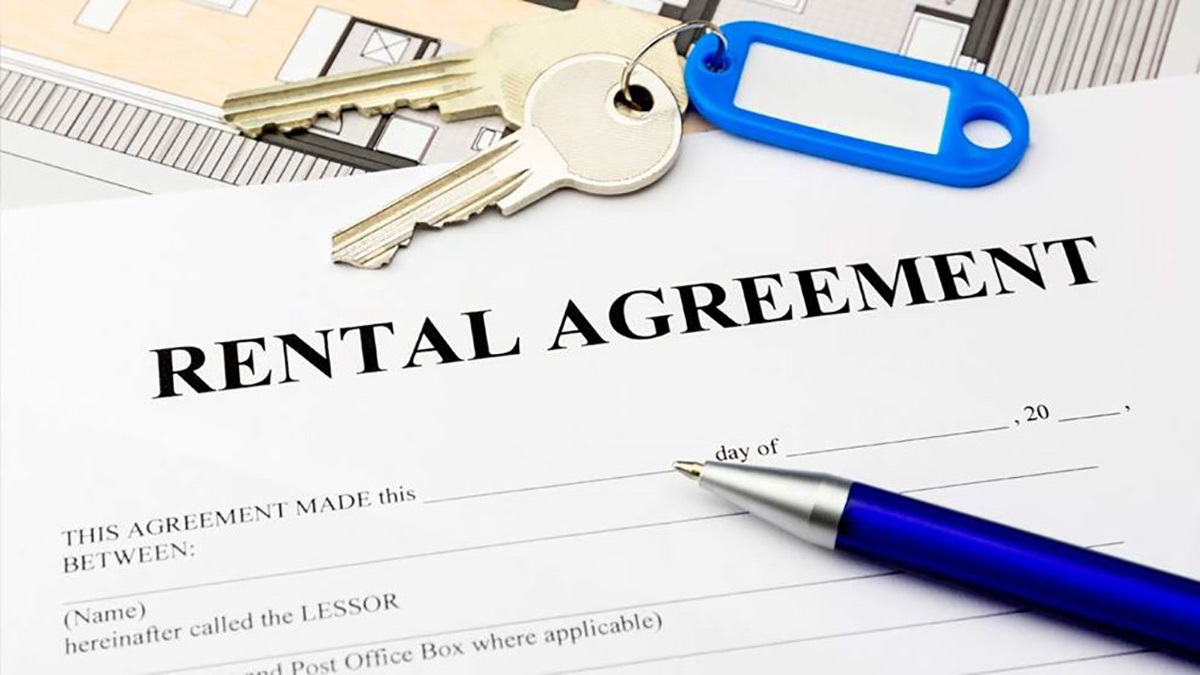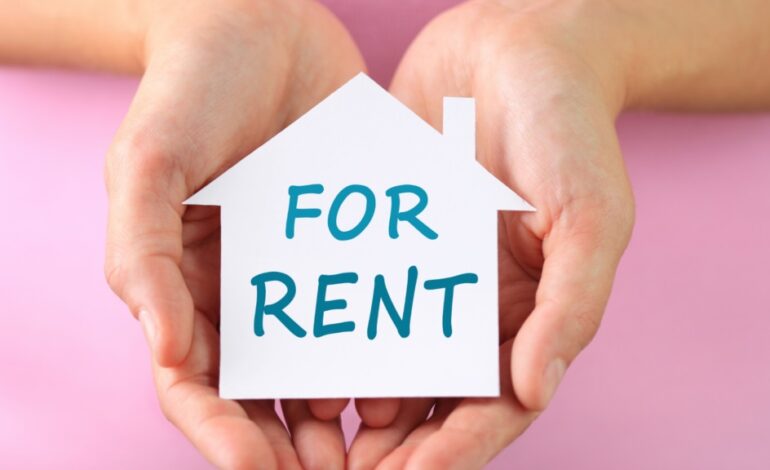
Perth Real looks at the process of leasing a property in 2023.
Perth & statewide in WA over the last couple of years the property market has become tight with under supply not matching demand. Its predicted that in 2023 migration could be approximately 300,000 people. How many new residents that will choose the west is can only be a guestimate. But it would be reasonable to say at least 10% – 20% which is 30-60,000.
Considering the total transactions on property for sales & purchases is nearly 1000 weekly which has doubled since 2015. 2022 reached 50,000 properties were sold. Add that together with the total available rental properties 275,000 in WA which runs around 20% available per year. This totals 70,000 properties available for possession. However adding the average sales adding its up to 100,000 buyers + renters. This means there will be a large number of excess people wanting property. Also with a 2.7 million population soon to be 3 million by 2025. The demand will exceed the supply for al long time.
reiwa.com.au/the-wa-market/perth-metro/
sqmresearch.com.au/weekly-rents.wa-Perth
RENTAL RATES
Due to the low levels of properties the changes in different ways to achieve accommodation in renting a room or property to live. An estimate on the costs are as follows;
Room Rent ~ $200 – $250
Incl. shared toilet, bathroom, kitchen, street parking + costs
Room & Ensuite ~ $250 – $300
Incl. private toilet, bathroom, shared kitchen, street parking + costs
Apartment ~ 1 Bed ~ $350 – $500
Multi strata, amenities, lounge, one carport + costs
Apartment/Unit ~ 2 Bed ~ $400 – $550
Multi strata, amenities, one car carport + costs
Villa ~ 2 bed ~ $450 – $550
Private living, amenities, small strata group, one car port + costs
Apartments ~ 3 bed ~ $700 – $900
Private living, amenities, small strata group, two car port + costs
Villa/Town House ~ 3 bed ~ $500 – $700
Private living, amenities, small strata group, one car port + costs
Family Home ~ 4 bed ~ $700 – $900
Single or double level, 2 car garage + costs
Prestige Home/Apartment ~ $800 – $1200
Luxury Home/Penthouse ~ $1200 – $2000
*Above estimates only

STEPS to RENT
Six simple steps for finding and securing the right rental property
1. Search for properties
Use the search function at the top of this page to find properties. Top factors to consider include cost, property size (rooms, bathrooms and common spaces), location, parking facilities, and access to public transport.
2. Choose your suburb
Every suburb or town has its own distinct charm and unique drawcards. If you need a little help choosing one suburb over another, read about local lifestyle features via our local suburb guides.
3. Shortlist your favourites
Attend open for inspections in person – viewing a property ensures there are no surprises and gives you an opportunity to ask the agent any questions you may have.
4. Apply for your top picks
Complete rental applications. Timing is everything in real estate, so don’t hesitate and apply if you really like something. You are under no obligation to sign a contract
5. Sign the lease
Once your application is accepted, you’ll receive a contract to sign. This is your opportunity to ask about the terms of the agreement. If you agree to the terms, sign the lease and pay the bond
6. Complete the entry report
Before you get settled, you must review the entry condition report and mark up anything that hasn’t already been noted. After that, it’s time to pop the champagne!

RENTAL RIGHTS
Rental rights you didn’t know you had
These days the prospect of home ownership is slipping further out of reach for many Australians, and not just those on lower incomes. The growing ranks of renters face a shortage of properties, high rents, low quality rental stock, and the likelihood of having to find a new place to live on a regular basis. In short, it’s tough out there. Now more than ever, Australian renters need to be across their rights and be willing to exercise them.
Recent renters’ rights updates
“Renting can, and should, be a legitimate long-term housing option for those who want it,” a Tenants’ Union of Victoria policy office tells CHOICE.
“Unfortunately, tenants are often unaware of their rights or are reluctant to enforce the rights they do have for fear of possible reprisal, particularly given the shortage of affordable rental properties.”
On the plus side, renters rights were recently beefed up in Queensland and Western Australia, and South Australia is reviewing its tenancy laws.
Pets are optional
landlords must allow tenants to keep pets, unless the property is not suitable.
Tenancy agreements
can’t be ended without sufficient grounds, which would include the property being sold or significantly renovated or a relative of the owner moving in.
Tenants can apply for repairs
to the state tribunal if the landlord hasn’t responded to requests within a reasonable timeframe. Tenants affected by domestic or family violence can more easily end a tenancy and get their bond back.
Tenants with physical disabilities
can alter the premises to improve mobility or safety if they can return it to its original state before they move out.
In 2019, tenancy laws in WA were updated to strengthen renters’ rights in a number of areas, including:
Allowing tenants experiencing family and domestic violence to end their tenancy with as little as seven days’ notice without any legal or financial penalty.
Establishing a process for tenants to be removed from tenancy databases (aka ‘blacklists’) if the listing was caused by family violence.
Giving tenants the right to improve the security of their rentals.
Allowing tenants to fix furniture to walls to prevent death or injury to a child or a person with a disability from toppling furniture.
Common renter misconceptions
Renters rights’ advocates from South Australia and WA outlined to us a number of rights that tenants in their states don’t always have their heads around. Given that tenancy legislation is similar around the country, it seems likely that renters in other states and territories have similar misunderstandings.
Property maintenance
“Many tenants [in WA] are not aware of their right to breach a landlord for a failure to undertake necessary maintenance,” says WA Consumer Protection Director of Legislation and Policy Penny Lipscombe.
“For example, if a rental property has two bathrooms and only one bathroom is able to be used due to a failure by the landlord to undertake necessary repairs within a reasonable time, the tenant can breach the landlord and take them to court and seek a reduction in rent in compensation for the loss of the amenity.”
In other states you may also be entitled to apply to your tenancy tribunal for a temporary reduction in rent, or to have your rent paid into a separate account until repairs are done.
A tenant may also have a right to compensation if their property is damaged as the result of poor maintenance.
“If damage to a tenant’s goods is caused by the failure of a landlord, a tenant can seek compensation for their loss,” says Lipscombe.
“For example, if a ceiling collapses because a landlord fails to undertake necessary maintenance.”
Getting your bond back
“Without a doubt, the bond refund process is the most common and consistent reason a tenant contacts RentRight SA,” says Dawes.
“Tenants are not informed of the bond refund process and believe that the landlord or agent holds the bond and that it is their decision whether to give it back or not.” In Western Australia, bond money is held by Bonds Administration.
Without a doubt, the bond refund process is the most common and consistent reason a tenant contacts RentRight SA
“Tenants are encouraged to agree for the landlord to keep the bond and do not realize that they do have a right to dispute this and any charges through the South Australian Civil and Administrative Tribunal [SACAT].”
Property condition Reports
“Tenants say that they are led to believe that they need to leave a property in a pristine condition when they vacate and have it ready for new tenants to move in,” Dawes says. “According to the RTA, a property needs to be left in a ‘reasonably clean condition’, which means it needs to be left in the condition it was when the tenancy started, with fair wear and tear.”
But, as Lipscombe says, “there can be confusion around what is ‘fair wear and tear’ and what is ‘damage’ at the end of a tenancy.”
“A tenant is responsible for the cost of repairs for any damage they, or people they have allowed onto the premises, have caused. Landlords are responsible for the costs associated with ‘fair wear and tear’ for example replacing old and worn floor and window coverings.”Eviction process
“Tenants are led to believe that landlords or agents have the right to enter their property, throw them out and change the locks,” Dawes says. “Often they are not informed that the landlord actually needs to apply for a hearing at SACAT [for tenants in South Australia] to ask for possession of the property, and that the tenant will be a part of that hearing and will have a say.”
Tenancy databases
“Tenants are generally unaware of their rights in relation to a listing on a tenancy databases, including how and why the listing occurred,” Lipscombe says. “This is despite the requirement for a tenant to be told why an agent or landlord is going to use a tenancy database.”
Longstanding rental rights
Aside from recent improvements in some states, certain renters’ rights are longstanding and similar across jurisdictions. Following, we outline your rights around rent increases, fee-free methods of paying rent, repairs, retaliatory evictions, tenancy database blacklisting, getting your bond back, steam cleaning carpet and who pays for water.
Rent increases
While you’re on a fixed-term tenancy agreement of two years or less, your rent generally can’t be increased unless it’s written into the agreement.
But once the term is up you’ll move onto a periodic agreement or rolling lease, unless you sign another agreement.
On these types of agreements the rent can be increased, but generally only once every six to 12 months (depending on your state or territory).
While you’re on a fixed-term tenancy agreement of two years or less, your rent generally can’t be increased unless it’s written into the agreement
But you’re entitled to a notice period of around 60 days around the country for any rent increase (except in the NT where it’s only 30 days).
Excessive rental increases
Although there are no official limits, a landlord cannot increase your rent “excessively”.
If you believe the increase is excessive, you can try disputing it through your state’s appropriate service – in most cases its civil and administrative tribunal.
If deemed excessive, the tribunal can issue an enforceable order preventing all or part of the increase, and set a period of time during which no further increases can be applied.
How can you know if the increase is excessive?
Nothing is written in stone, but the tribunal may consider things such as:
~ the range of market rents charged for similar properties in the area
the condition of the property
~ the level of repairs the landlord has done and the amount to spend
~ how long it’s been since the last increase
~ if you’ve paid for any work to be done
~ the proposed increase compared to the current rent.
~ Read more: Renters seeking compensation for substandard housing.
Fee-free rent payments
When we looked into third-party rent collection (such as rent cards), we found a lack of regulation that opened the door for renters to be charged fees to pay their rent.
The situation has improved in some states, but many renters are still unprotected.
Repairs
There’s generally a distinction in tenancy legislation between urgent or emergency repairs and those that are less urgent.
Urgent repairs are generally specified as posing a danger or likely to cause undue inconvenience, such as a dangerous electrical fault or a blocked or broken toilet.
Beyond these types of repairs, each state and territory – in theory – requires landlords to conduct repairs to maintain the property in a reasonable condition, but in practice this doesn’t always happen.
You generally can’t stop paying your rent if your landlord doesn’t do the repairs
Research by Consumer Affairs Victoria found that 53% of tenants had experienced problems in getting repairs completed, and only 40% who had requested non-urgent repairs reported that they were completed promptly and to an acceptable standard.
You generally can’t stop paying your rent if your landlord doesn’t do the repairs. But you may be entitled to apply to your tenancy tribunal to seek a temporary reduction in rent as compensation or have your rent paid into a special account until the repairs are done.
What sort of repairs and maintenance are covered? For non-urgent repairs, the standard of repairs you can expect will differ depending on:
the state of the property when you moved in
the age of the property and its prospective life, and
the price you pay for the property (potentially).
renter trying to fix a broken water pipe
Many renters have to deal with properties in need of repair, but are afraid to complain for fear of not having their lease renewed.
Excessive mould as a result of structural issues or broken elements on a stovetop are common non-urgent issues where tenants should be entitled to repairs.
But many tenants are too scared to ask for repairs for fear of being kicked out.
A survey by the Tenants’ Union of NSW found 77% of respondents had put up with a problem because they were worried it would adversely affect their tenancy if they asked to get it fixed.
Protection against retaliatory evictions
It’s pointless to provide protections for tenants if they’re too afraid to assert them for fear of retaliation from their landlord, but such is the sorry state of today’s rental market.
“Unfortunately, in this current rental climate, people are desperate and may not be asking questions or reading tenancy agreements as they should, which is completely understandable,” Dawes says. “We also see that tenants are not exercising their rights, particularly around maintenance, for fear of being seen as a nuisance tenant and not having their lease renewed, or being blacklisted.”
WA Consumer Protection’s Penny Lipscombe makes the same point.
“Where tenants are aware of these options there can be a reluctance to pursue them due to fear of going to court and of retaliation by landlords, especially when the rental market is very tight.”
It’s pointless to provide protections for tenants if they’re too afraid to assert them for fear of retaliation from their landlord, but such is the sorry state of today’s rental market
If you’re on a fixed-term agreement a landlord can’t kick you out without good cause (such as violating the terms of the lease), but for renters on a periodic lease it’s a different story.
In most states and territories (with the exception of the ACT and Tasmania) a tenant on a periodic lease can be given a ‘no grounds’ eviction notice as long as it’s within the notification period.
Research from the Tenants’ Union of Queensland found no-grounds evictions were the most common form of eviction, and in many of these cases tenants felt they were a form of retaliation.
Thankfully, some states and territories provide some sort of protection against retaliatory evictions or at least give you the right to challenge the reason for a termination decision.
Read more: Renters seeking compensation for substandard housing
Tenancy database blacklisting
Tenancy databases such as the National Tenancy Database provide lists of problem tenants that real estate agents can review when conducting tenant history checks.
According to our research, around 50% of renters are fearful of being “blacklisted” on such databases because it would make it harder to find a place to rent in the future (although only three percent of renters actually reported this happening to them).
There are only two scenarios in which your name can be put on a tenancy database, and you can only be listed once your tenancy has ended
While you may think exercising your rights will tarnish your rental record, there’s regulation across Australia around how these databases can be used (with the NT somewhat of an outlier).
There are only two scenarios in which your name can be put on a tenancy database, and you can only be listed once your tenancy has ended:
your rent is in arrears by an amount in excess of the bond, or
you’ve breached your tenancy agreement.
You can’t be listed simply because you exercised your rights.
Also, the agent or landlord is required to tell you if they intend to list you so you have time to consider and dispute the information.
You must also be told if the agent finds a listing on you when they make their checks. And listings older than three years must be removed.
Read more: Tenant databases and blacklists – what can landlords and agents list about you?
Getting your bond back
In most states and territories you’re required to lodge your bond with the relevant bond authority. If there’s a dispute at the end of your lease, the money is held with a third party – out of reach from an agent or landlord who may not be playing fair.
The arrangement also means you can apply to get your bond back independently if the landlord doesn’t authorise its release in a timely fashion, or if there is a disagreement over the bond.
“The idea that your landlord won’t give your bond back is a bit of a furphy,” Ned Cutcher told us when he was a senior policy officer at the Tenants’ Union of NSW.
The landlord must then make a case to the bond board in a timely fashion if there’s anything they want to complain about
As soon as your tenancy is over in NSW, you have the right to unilaterally apply to the NSW Civil and Administrative Tribunal (NCAT) to get your bond back – that is, “you don’t need to wait for your landlord to sign off”, Cutcher says.
The landlord must then make a case to the bond board in a timely fashion if there’s anything they want to complain about.
It’s a similar story in Victoria. As a tenant you can apply directly to the Victorian Civil and Administrative Tribunal (VCAT) if you can’t reach an agreement with the landlord on your application to the bond board.
If the landlord intends to make a claim on the bond, they must do so within 10 days of the tenancy agreement finishing.
The is no specific tenancy requirement in any state for renters to steam clean carpets before moving out.
Carpet cleaning when you move out
You’ve scrubbed the house from top to toe, only to find your agent or landlord wants a receipt for carpet steam-cleaning before they’ll give your bond back.
In New South Wales, the law is clear – it’s prohibited to include a term in a lease requiring you to have the carpets professionally cleaned, unless you’ve agreed to it as a condition for keeping pets at the property.
Elsewhere, whether you have to steam clean the carpets or not is a little hazier. Legislation generally requires you to ensure the house is “reasonably clean” (the definition of “reasonably” will depend on the condition of the house when you moved in).
While no tenancy laws specifically require that the carpets be professionally cleaned, a landlord or agent may include it as a special term on a lease.
Some fair trading and consumer affairs bodies outside New South Wales say that if it’s written into a lease (regardless of whether it was done prior to moving in) you need to honour it.
However, some consumer affairs agencies and tenants’ unions suggest that carpets should only need to be cleaned if the landlord/agent cleaned the carpets prior to you moving in (it’s about leaving the house in the same condition as when you moved in).
While no tenancy laws specifically require that the carpets be professionally cleaned, a landlord or agent may include it as a special term on a lease
For example, the Tenants Union of Victoria policy officer argues that, in Victoria, lease provisions requiring the carpets to be cleaned aren’t automatically enforceable.
“Tenants are obliged to leave the premises reasonably clean, and if carpets meet this standard by normal cleaning then nothing further is legally required.”
“The Tenants Union of Victoria has successfully argued these types of cases at VCAT; however, many tenants continue to pay for professional cleaning even in situations where it is not required or enforceable.”
Carie Dawes says “the RentRightSA tenancy advisers often hear that tenants are told they must have the carpets and window coverings professionally cleaned. This is actually inconsistent with the Act and cannot be enforced”.
If you do decide to clean the carpets, it’s worth keeping the receipt, and you shouldn’t be forced to use a particular company.
Who pays for water use
When it comes to water bills, you’re only liable for your water consumption charges, not other associated supply charges (unless you live in South Australia, where supply costs can be passed on).
But if you’re on a shared meter (often in apartments) you can’t be charged for your consumption or supply. This doesn’t apply in South Australia or WA, where consumption on a shared meter can be charged provided the method of calculation is spelt out on your lease.
If you’re on a shared water meter (often in apartments) you can’t be charged for your consumption or supply
In New South Wales and Queensland you can’t be charged for water consumption unless the correct water efficiency measures are installed (these vary slightly in each state).
This isn’t a requirement in other states, although if a water fixture needs to be replaced in Victoria it must be done with a fixture with a minimum three-star water efficiency rating.
Western Australia Govt
Tenancy WA
Residential Tenancies Act 1987
Disputes: Magistrates Court of Western Australia.
Department of Commerce’s Consumer Protection







